 I’m back in the People’s Republic of China for most of the month of June, after almost two years away. Change is everywhere, not always for the better. A new set of nearby high-rise apartment buildings now blocks most of the previously spectacular view south from the balcony of our Shenzhen apartment toward Hong Kong, across a wildlife preserve. My formerly cherished little restaurant, just a short walk away, has changed chefs, with the result that the new cook’s lamb specialties have replaced many of my favorite seafood dishes . . . alas.
I’m back in the People’s Republic of China for most of the month of June, after almost two years away. Change is everywhere, not always for the better. A new set of nearby high-rise apartment buildings now blocks most of the previously spectacular view south from the balcony of our Shenzhen apartment toward Hong Kong, across a wildlife preserve. My formerly cherished little restaurant, just a short walk away, has changed chefs, with the result that the new cook’s lamb specialties have replaced many of my favorite seafood dishes . . . alas.
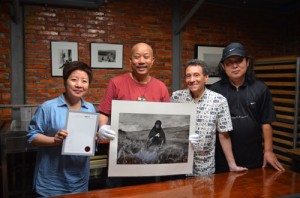
(L-R) Anna Lung, Yang Yankang, A. D. Coleman, ??, OCAT, Shenzhen, China, June 2, 2012. Photo by Jia Yuchuan.
On June 2, the day after I arrived, Anna and I visited our friend, the photographer Yang Yankang, at his studio in OCAT, the OCT Contemporary Art Terminal, the closest thing in Shenzhen to an artists’ community, a cluster of structures that started out as an arts enclave and functioned as such at least through my last visit in July 2010 — mostly studio spaces occupied by artists, photographers, architects, graphic designers, and other creative professionals, grouped around an arts center. The art center’s still there, but now it’s surrounded by trendy restaurants, bars, and shops. Yang tells us that the rapidly rising rents have begun to drive out the artist residents who formed its initial population. Like the transformation of SoHo in Manhattan, but at warp speed, artists serving yet again as the cutting edge of gentrification, in China as elsewhere.
Minor matters, to be sure. On the broader front, China’s economy is slowing. Ripples of the Bo Xilai scandal continue to spread. The blind self-taught lawyer Chen Guangcheng is temporarily safe in the west. Activist Li Wangyang has been found hanged in his hospital room, declared a “suicide” by the authorities though his slippered feet were still firmly on the ground. Chen Xitong, the former mayor of Beijing, has stated on the record that the Tiananmen Massacre of 1989 was unnecessary and preventable, and that the Central Committee made him into the scapegoat for their murderous decision. Recent measurements indicate that the Great Wall of China is considerably longer than previous estimates suggested, yet even this massive eastern version of the Maginot Line didn’t serve to keep the outside world at bay. Cracks in the monolithic façade seem to expand rapidly.
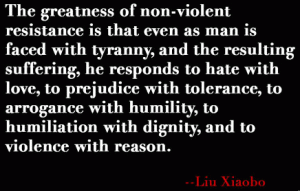 I arrived here on June 1, so I was in China on June 4, the twenty-third anniversary of the slaughter in Tiananmen. I don’t hack my way around the Great Firewall when here; I want to experience what the average Chinese netizen gets. Google searches for any terms relating to Tiananmen turned up no results, but I could access the websites of CNN, the BBC, the New York Times, and the Washington Post, at all of which I found some Tiananmen stories blocked yet others accessible. Anna’s blog post commemorating the date got deleted, along with similar posts by countless others; it’s traditionally the busiest day of the year for the government’s web censors. But much gets through, more and more all the time; patrolling the web is much like herding cats, and China’s population of unbagged felines grows exponentially.
I arrived here on June 1, so I was in China on June 4, the twenty-third anniversary of the slaughter in Tiananmen. I don’t hack my way around the Great Firewall when here; I want to experience what the average Chinese netizen gets. Google searches for any terms relating to Tiananmen turned up no results, but I could access the websites of CNN, the BBC, the New York Times, and the Washington Post, at all of which I found some Tiananmen stories blocked yet others accessible. Anna’s blog post commemorating the date got deleted, along with similar posts by countless others; it’s traditionally the busiest day of the year for the government’s web censors. But much gets through, more and more all the time; patrolling the web is much like herding cats, and China’s population of unbagged felines grows exponentially.
By unofficial count, 180,000 people crowded into Victoria Park in Hong Kong on June 4 to mark the event. Public memorials for this tragedy on the mainland remain forbidden, with any attempts quickly and brutally suppressed, but the day fast approacheth. The Chinese government cannot survive much longer as a slow boat on a fast current. The anniversary that must concern them now is the 25th, in June 2014. That will surely test the incoming government; by then the internet and social media will make it all but impossible to smother response to the occasion.
Yet the Chinese Communist Party seems bound to some of China’s ancient traditions. The “burning of the books and burying of the scholars” innovated by this nation’s first emperor, Qin Shi Huang (259 BC – 210 BC), remain the CCP’s methods of choice for controlling the thought of the population. Worth remembering, too, that when Emperor Chin died during one of his tours of Eastern China, his Prime Minister, Li Si, concerned that the news of his death might set off a revolution, devised a strategem to convince people that the ruler still lived. He ordered two carts full of rotten fish to parade just ahead of and behind the Emperor’s carriage, in which his body sat decomposing in the late-summer heat, to disguise the smell of his deliquescing cadaver.
Nothing heroic about that — not exactly El Cid strapped to his saddle for one last go at the Moors. Just a desperate, pathetic clinging to the familiar by a power structure terrified of the new. If you whiff the political air of China today, the scent of putrefying seafood hovers unmistakably.
•
 My own bit part in this transformation, via involvement in the touring exhibition “The Silent Strength of Liu Xia,” came to the foreground last Saturday, June 9, in Hong Kong. The show, for which I now serve as co-curator and tour manager, had its first-ever opening on Chinese soil: a featured role in the 2012 Annual Event of the Independent Chinese PEN Center (ICPC).
My own bit part in this transformation, via involvement in the touring exhibition “The Silent Strength of Liu Xia,” came to the foreground last Saturday, June 9, in Hong Kong. The show, for which I now serve as co-curator and tour manager, had its first-ever opening on Chinese soil: a featured role in the 2012 Annual Event of the Independent Chinese PEN Center (ICPC).
 The ICPC’s yearly celebration concentrates primarily on literary matters, that being the core of concern that binds the members of PEN International together. (I’ve been a member of the U.S. branch, PEN American Center, for decades.) Since, in addition to her artwork, Liu Xia is also a poet, and since her imprisoned husband, the 2010 Nobel Peace Prize recipient Liu Xiaobo, is a poet and essayist and former president of the ICPC, it seemed both logical and inevitable that the organization asked permission to incorporate this show into the proceedings, which took place on the campus of the City University of Hong Kong.
The ICPC’s yearly celebration concentrates primarily on literary matters, that being the core of concern that binds the members of PEN International together. (I’ve been a member of the U.S. branch, PEN American Center, for decades.) Since, in addition to her artwork, Liu Xia is also a poet, and since her imprisoned husband, the 2010 Nobel Peace Prize recipient Liu Xiaobo, is a poet and essayist and former president of the ICPC, it seemed both logical and inevitable that the organization asked permission to incorporate this show into the proceedings, which took place on the campus of the City University of Hong Kong.
For logistical reasons, this involved production of a second set of prints of the images, made from the digital files available to us. Due to matters too complicated to detail here, those got printed in Taipei and then shipped to Hong Kong. There they got framed and incorporated into an installation designed by the “behavioural artist” Sanmu (三木), who also performed during the opening ceremonies. He created a freestanding framework of walls bearing a greatly enlarged detail from one of Liu Xia’s images (a cluster of beach rocks), against which the framed photographs leaned while resting on the floor, as finished works might get displayed in an artist’s studio. A most imaginative response to the photographs.
In addition, Tienchi Martin-Liao (president of the ICPC) had arranged with Amnesty International for the shipping to Hong Kong of “The Empty Chair,” a work by the Dutch designer Maarten Baas created for AI. The sculptural metal chair, whose ladderback turns into a towering ladder leading skyward, symbolizes the world’s imprisoned and otherwise fettered writers and other spokespersons for peace, freedom, and justice.
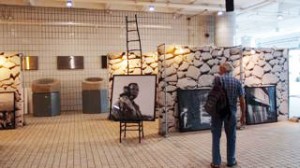
Liu Xia installation with the “Empty Chair,” Hong Kong, June 9, 2012. Photo © 2012 by A. D. Coleman.
Sanmu and Patrick Poon of the ICPC had decided to incorporate this resonant artifact into the Liu Xia installation. Uncrated and assembled at the end of the morning’s ceremonies, the chair (minus its top section — it proved too tall for the space) when positioned supported Liu Xia’s portrait of Liu Xiaobo holding the doll that represents him in her photographs, giving him a visual presence at the event in addition to the many acknowledgments of his spiritual presence there by the attendees and speakers.
The June 9 program began with short talks about Liu Xia and her work by myself, Martin-Liao, Marian Botsford Fraser (chair of PEN International’s Writers in Prison Committee), Prof. Joseph Cheng (director of the Contemporary China Research Project at City University of Hong Kong), and Sarah Hoffman, coordinator of PEN American Center’s Freedom to Write Committee). For further details on on this showing of “The Silent Strength of Liu Xia,” click here.
•
The ICPC’s five awardees for their annual prizes were unable to attend this event, prevented by the authorities from leaving the mainland. They were represented during the ceremony by their portraits sitting on otherwise empty chairs. Many of the attendees from the mainland came against the expressed wishes of those same functionaries.
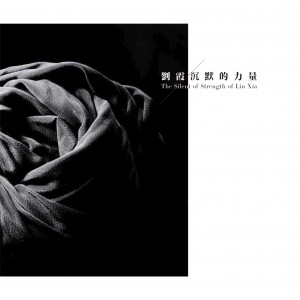 Coming back across the border from Hong Kong to Shenzhen on Sunday afternoon, we brought with us several dozen copies of the exhibition catalogue to give to friends here. Plus a copy of the Chinese-language book Conversations with Chen Xitong, by Chinese scholar and author Yao Jianfu, whose acquaintance we made at the ICPC event and who signed and inscribed this copy for Anna. Hong Kong’s New Century Press, which published it, has no plans to launch the book on mainland China; as noted above, the Tiananmen protests remain a taboo topic there. But if we can bring a copy in, so can others. Tick tick tick.
Coming back across the border from Hong Kong to Shenzhen on Sunday afternoon, we brought with us several dozen copies of the exhibition catalogue to give to friends here. Plus a copy of the Chinese-language book Conversations with Chen Xitong, by Chinese scholar and author Yao Jianfu, whose acquaintance we made at the ICPC event and who signed and inscribed this copy for Anna. Hong Kong’s New Century Press, which published it, has no plans to launch the book on mainland China; as noted above, the Tiananmen protests remain a taboo topic there. But if we can bring a copy in, so can others. Tick tick tick.
•
This post supported by a donation from the Estate of Lyle Bongé.


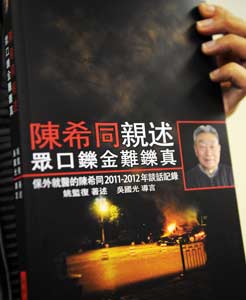
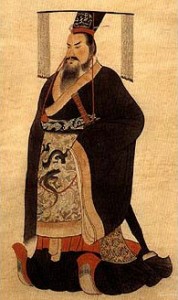
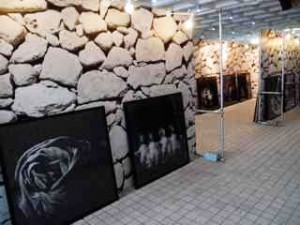




An amazing work and one people need to see. The symbolism of the chair applies to all of us today. Looking forward to the next segment!
Where next will you be going globe trotter?
We get back to NYC on June 27, after which, blessedly, I have no travel planned and get to stay at home for months on end.
Wow what a exciting trip filled with great work and wonderful People and great food to boot how cool is that –
Thank you for sharing this account. The exhibition you’ve co-curated and are managing is a deeply important one for the world to know about. You and Anna are continuing to do good work not only for the people of China but for all who care about human rights, spirit, creativity, and art.